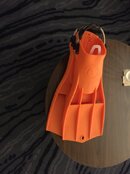- Messages
- 862
- Reaction score
- 800
- # of dives
- 500 - 999
Experience makes all the difference.
You can learn a great deal from classes, but you must have the opportunity to put what you have learned to use. In my opinion that is a big issue with most organizations. That applies to divers as well as dive professionals.
My experience is with PADI, but probably applies to most. There is little in the way of experience required to progress through your formal training. "Divemaster", "Advanced Open Water", "Master Scuba Diver". All sound very impressive, but require little in the way of actual in water experience.
In PADI, a diver needs only 40 logged dives to begin and 60 logged dives to complete the "Divemaster" training. I've dove with many a "Divemaster" I would be scared to share a bathtub with. Certs and titles don't mean a lot when there is no experience to back it up. Problem is, we depend on these certs to give us an idea of the quality of the people with which we are diving (or depending on "leading" us). We have nothing else to go on when we are diving with someone for the first time.
Keep that in mind when you enter the water with a "Divemaster" or a first time buddy who is a "Master Scuba Diver" and place any dependence on their "expertise".
I would add...
Dive often. Take baby steps. Get experience.
You can learn a great deal from classes, but you must have the opportunity to put what you have learned to use. In my opinion that is a big issue with most organizations. That applies to divers as well as dive professionals.
My experience is with PADI, but probably applies to most. There is little in the way of experience required to progress through your formal training. "Divemaster", "Advanced Open Water", "Master Scuba Diver". All sound very impressive, but require little in the way of actual in water experience.
In PADI, a diver needs only 40 logged dives to begin and 60 logged dives to complete the "Divemaster" training. I've dove with many a "Divemaster" I would be scared to share a bathtub with. Certs and titles don't mean a lot when there is no experience to back it up. Problem is, we depend on these certs to give us an idea of the quality of the people with which we are diving (or depending on "leading" us). We have nothing else to go on when we are diving with someone for the first time.
Keep that in mind when you enter the water with a "Divemaster" or a first time buddy who is a "Master Scuba Diver" and place any dependence on their "expertise".
I would add...
Dive often. Take baby steps. Get experience.




